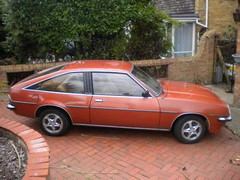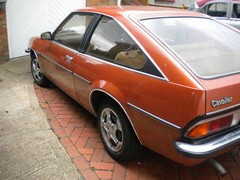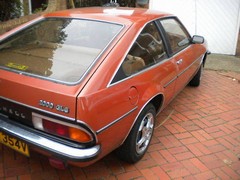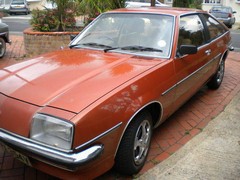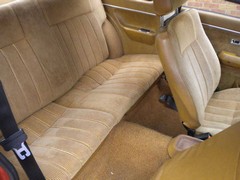After eight years of moderate coupé sales with the 15/17, Renault needed something fresh, and in February 1980 introduced the Fuego 3-door coupé.
The Fuego's exterior was designed by Michel Jardin, working under Robert Opron who had previously designed the Citroën SM, Citroën GS, Citroën CX, and later followed with the Renault 25 in 1984.
Available as TL and GTL with 1,397 cc engine and a 4-speed manual gearbox, and GTS with 1,647 cc engine and a 5-speed manual or 3-speed automatic gearbox.
The TL had basic equipment with 155 SR 13 tires, heated rear window, rear fog light, split/fold rear seat, and cloth upholstery. The GTL adds 175/70 13 tires, electric front windows, tachometer, height-adjustable steering wheel, front head restraints, analog clock, wheel covers, remote-adjustable drivers door mirror, laminated windscreen, opening rear quarter windows, H4 headlights, pre-installed radio kit, and velour upholstery. The GTS adds engine oil level gauge, power-assisted steering, and optional 3-speed automatic transmission.
It was heavily based on the Renault 18, sharing its floorpan and drivetrain, but featuring a new front suspension design. In the electronic spirit of the early 1980s the Fuego was the first car in the world to have a remote keyless system with central locking and was also the first car to have steering wheel mounted satellite controls for the audio system.
It parked uncomfortably in Renault's line-up of mediocre family cars, a sore thumb with a proper, emotive name (it's Spanish for fire) instead of a number like the 5, 9, 18 or 25.
In 1984, Renault gave us the Fuego Turbo, with a blown 1.6-litre engine putting out 132bhp through desperately scrabbling front wheels as the torque-steer did its un-level best to hamper every smooth start. It even came with a largely pointless on-board trip computer to fiddle about with while waiting at traffic lights to floor the throttle once more. An obscenely huge sticker on the doors read "TURBO" for the benefit of anyone who hadn't already guessed.
In truth, the Fuego was not the committed performance driver's choice. The spongy MacPherson strut suspension, betraying the Renault 18 within, had been devised for comfort and not for being hurled in and out of tight corners at speed. There was little of the finely tuned and supple Golf GTi to the car, and hot hatchbacks like that were, by then, rapidly overshadowing cars such as the Capri, Manta and Fuego.
The Fuego was axed from French production lines in 1985 and stopped importing it into Great Britain in 1986, although it was made in Spain until 1987, and spent its twilight years in Argentina, where it was produced as the Fuego GTA Max until 1993 with a 2.2-litre engine.
The Fuego was not directly replaced by another model in the Renault range. A Fuego II was planned, similarly styled as the Renault Alpine GTA, but the development of the new model was cancelled at the last minute due to Renault's financial problems and the falling sales of sports coupés in general at that time.
An exact production total for the Fuego is impossible to come by, but around 226,583 were made in France, with maybe another 40,000 hailing from Spain, Argentina and Venezuela.






